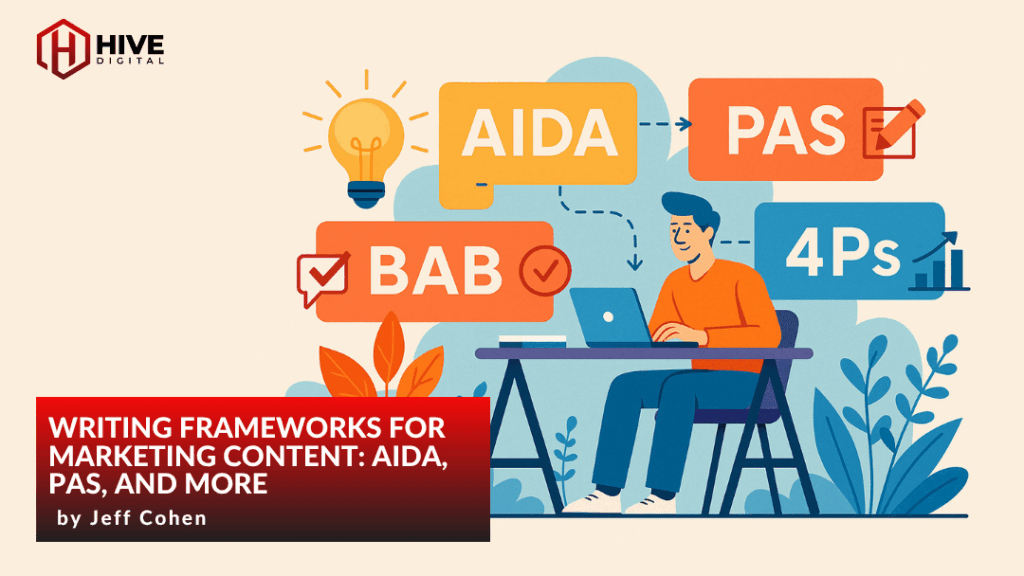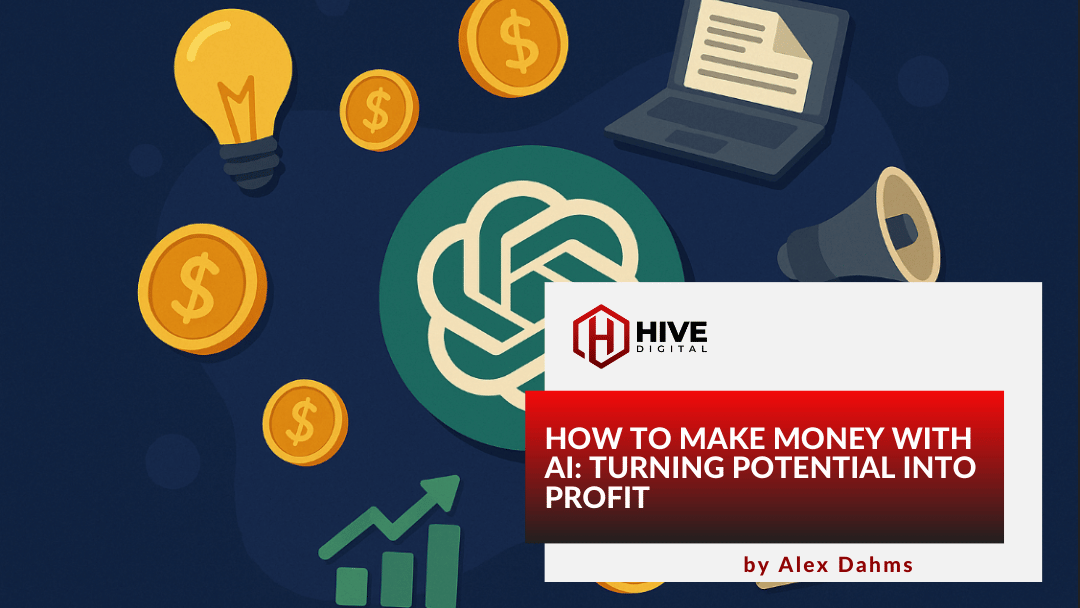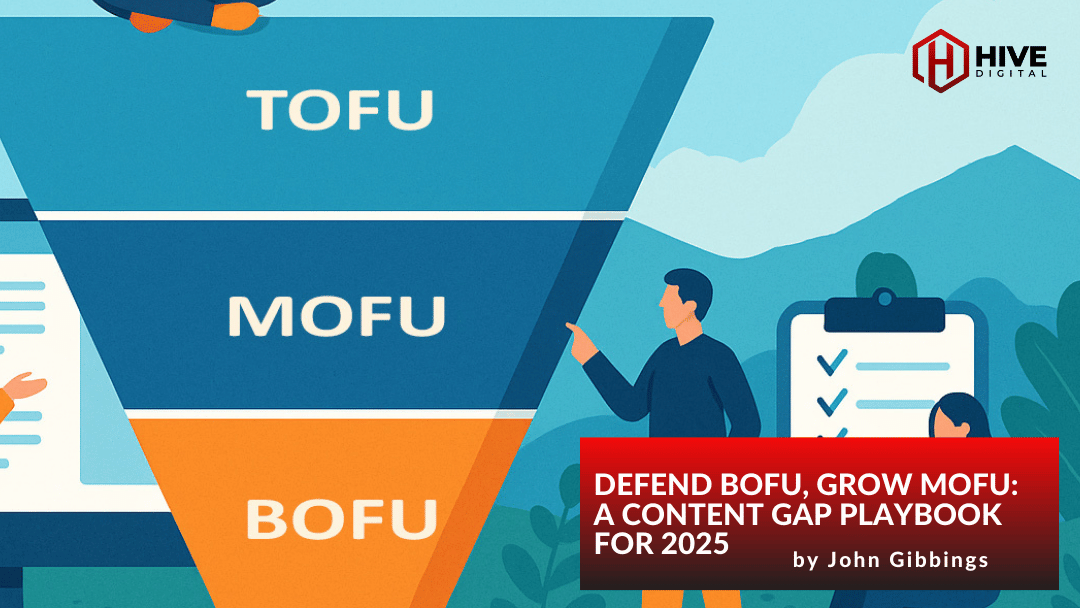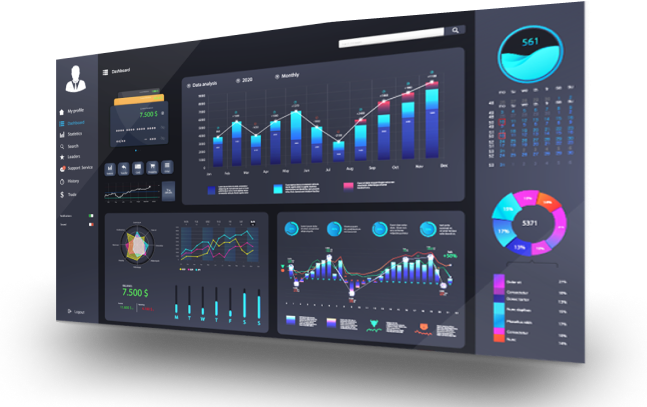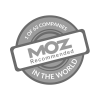Great marketing copy rarely starts from scratch, it starts with structure.
Writing frameworks like AIDA and PAS give your ideas direction, helping you connect with readers and lead them naturally toward action. Instead of staring at a blank page, you’re working from a proven foundation that keeps your message focused, persuasive, and easy to follow. Whether it’s a landing page, a service overview, or an email campaign, a good framework helps every word work a little harder.
What Are Writing Frameworks in Marketing?
Think of a writing framework as a blueprint for persuasive storytelling. They give your message a clear structure, so instead of guessing what to say next, you’re following a logical flow that matches how people typically absorb information and make decisions.
At their core, these frameworks are about focus. They help you organize ideas in a way that guides the reader from first impression to final action. Whether you’re writing a landing page, ad, or email, having that structure in place means your content is more purposeful, more effective, and easier to execute, especially when you’re working across teams or scaling content production.
They’re not rigid templates, but flexible tools that help your message land faster and resonate longer.
Popular Writing Frameworks and When to Use Them
AIDA: Attention → Interest → Desire → Action
When to use AIDA: Landing pages, ads, homepage hero sections
- Attention: Start with a headline or hook that stops the scroll
- Interest: Add context or a relatable pain point
- Desire: Paint the picture of what’s possible with your solution
- Action: End with a clear next step (your CTA)
AIDA is your go-to when you need energy, emotion, and a fast path to conversion.
PAS: Problem → Agitation → Solution
When to use PAS: Sales pages, emails, product features
- Problem: Identify what your audience is struggling with
- Agitation: Turn up the urgency by showing the cost of inaction
- Solution: Present your offer as the fix
PAS works beautifully when you need to empathize first, then solve.
BAB: Before → After → Bridge
When to use BAB: Short-form ads, social posts, quick promotional blurbs
- Before: The reader’s current reality
- After: The positive change your product brings
- Bridge: How to get there (your product, service, or offer)
BAB is simple but powerful, a great fit for storytelling in tight spaces.
4Ps: Picture → Promise → Prove → Push
When to use 4Ps: Social content, case studies, testimonials
- Picture: Set the scene with a story or visual cue
- Promise: Explain the benefit or transformation
- Prove: Show evidence, data, testimonials, or expertise
- Push: End with a confident call to action
4Ps is ideal when you need credibility and persuasion in balance.
How These Frameworks Fit With TOFU, MOFU, and BOFU
Each framework complements a different stage of the marketing funnel:
- TOFU (Top of Funnel): Use AIDA to spark curiosity and guide new audiences from awareness to interest.
- MOFU (Middle of Funnel): Try PAS or BAB to explore pain points, present solutions, and build trust through relatable storytelling.
- BOFU (Bottom of Funnel): Lean on 4Ps to prove value, reinforce credibility, and inspire confident action.
When you pair the right framework with the right funnel stage, your content naturally leads people from discovery to decision, without feeling forced.
Pro Tip: Frameworks are starting points, not hard rules. Feel free to get experimental and mix, match, or modify them to fit your tone, audience, and conversion goals.
From Frameworks to Full-Funnel Growth
Writing frameworks don’t box you in, they help your message land with more clarity and impact. When every piece of content has a clear purpose, you’re not just filling space, you’re guiding your audience toward action.
Do you need help building content that connects and converts? Reach out to the Hive Digital team and we can help you create a framework-driven content strategy that resonates with real audiences, and shows up where they’re looking – like AI platforms, search engines, and social media channels.
FAQs: Writing Frameworks in Marketing
Q: What is a marketing writing framework?
A: A marketing writing framework is a repeatable structure that helps organize persuasive content. Frameworks like AIDA, PAS, and 4Ps guide how to capture attention, build interest, and lead readers to take action.
Q: How do AIDA and PAS differ in copywriting?
A: AIDA focuses on moving readers from attention to action through emotional engagement. PAS starts with a pain point, heightens urgency, and ends with a solution. Both are effective but serve different purposes.
Q: Which writing frameworks work best for SEO content?
A: AIDA and BAB are great for top-of-funnel SEO content, while PAS and 4Ps are more effective for product pages, case studies, or conversion-oriented content. The key is aligning the framework with search intent.
Q: Can you mix different frameworks in one piece?
A: Yes, especially in longer content. Many marketers start with an AIDA hook, use PAS to build urgency, and close with a BOFU-style proof and CTA. Frameworks are flexible tools—not rigid formulas.

